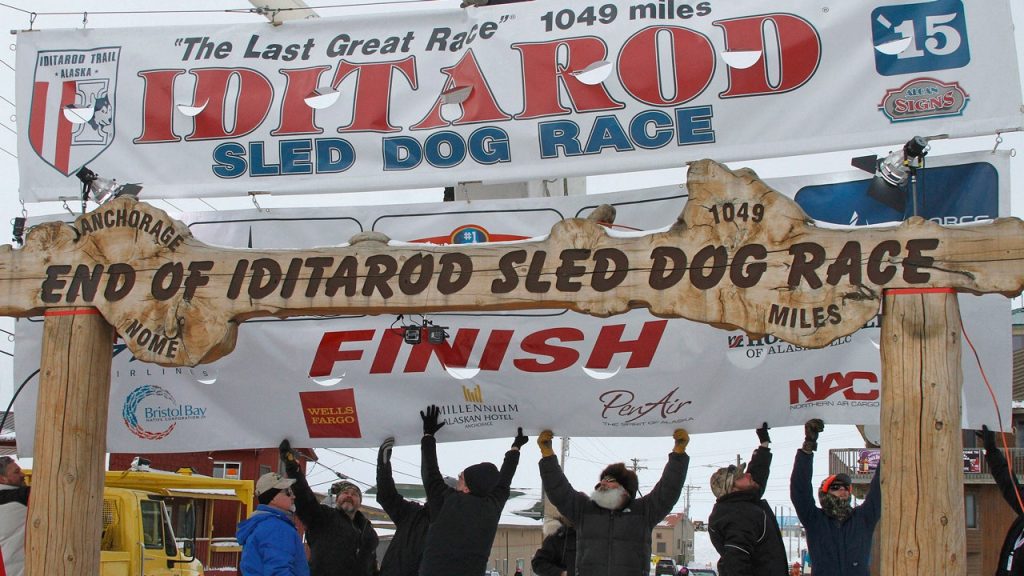The iconic burled arch finish line for the Iditarod Trail Sled Dog Race in Alaska collapsed into a wood pile, likely due to wood rot. The arch had been located in a city park in Nome and was used by mushers to complete the 1,000-mile race across the state. Messages seeking information on replacing the arch were not immediately returned, but the collapse comes after a controversial race marked by the deaths of three sled dogs. People for the Ethical Treatment of Animals renewed their call for an end to the Iditarod following the incidents.
The original arch was built by musher Red “Fox” Olson in 1974, weighing 5,000 pounds and taking 500 hours to complete. It was damaged in 1999 and restored, hanging on display in a recreation center in Nome. A new arch was completed in time for the 2000 race, but frequent repairs were needed due to harsh weather conditions from the Bering Sea. The arch became a popular tourist spot for photos, whether on Front Street or moved to another location after the race.
Nome Mayor John Handeland discovered the collapse on Saturday night and salvaged pieces of the wood for safekeeping. The loss of the iconic arch was met with strong reactions, with People for the Ethical Treatment of Animals posting on social media that the collapse signaled the race was on its “last leg.” The race’s future is uncertain following the recent deaths of sled dogs and the collapse of the finish line arch, as the controversy surrounding the Iditarod continues to grow.
Efforts to replace the arch have not been immediately successful, as both Nome officials and Iditarod race organizers have not responded to inquiries about the collapse. The importance of the arch as a symbol of the race’s completion and tradition adds to the significance of its collapse, with many hoping for a swift restoration. The race’s history and impact on Alaska’s culture and economy make the preservation of traditions like the burled arch a priority for many involved in the Iditarod.
The collapse of the arch brings attention to the challenges faced by the Iditarod, including concerns from animal rights activists about the treatment of sled dogs and the safety of the race. The deaths of multiple dogs during this year’s race have reignited calls for reform or an end to the event, as critics argue that the risks and harm to animals outweigh any benefits. The collapse of the arch serves as a symbolic moment in the ongoing debate over the future of the race and its place in Alaska’s identity.
The history of the Iditarod and the significance of the burled arch as a finish line marker add layers of meaning to its collapse. The arch, originally built by a musher and then replaced with a new version due to weather damage, has become a beloved symbol of the race for both participants and spectators. The loss of the arch brings into focus the importance of traditions and symbols in preserving the legacy of events like the Iditarod, as efforts to rebuild and restore what was lost continue amid lingering uncertainty about the race’s future.













